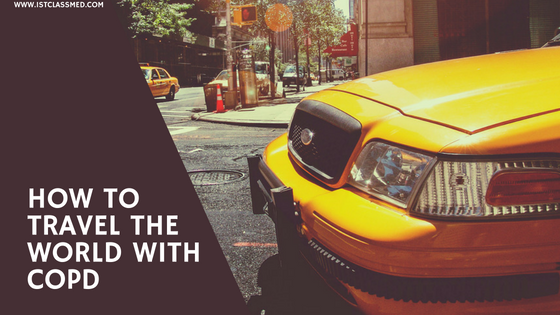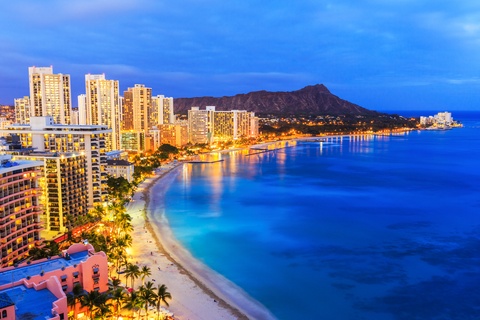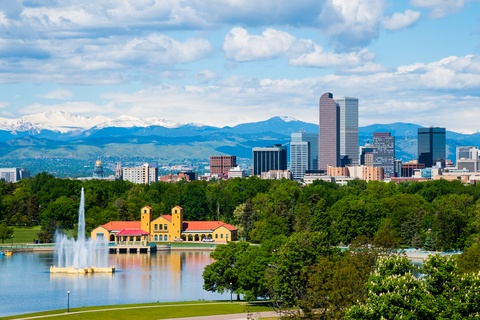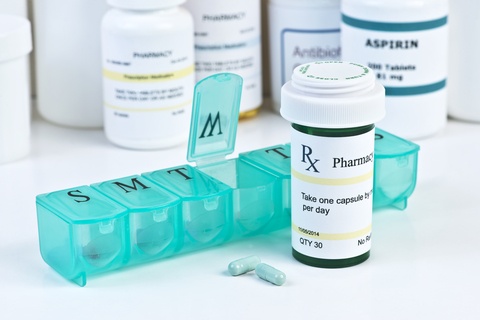
With summer just starting, it is time to travel, alone, with friends or family.
Though travel is a fun way to explore, it can be hard for people with chronic obstructive pulmonary disease (COPD).
Having a lot of luggage, and then worrying about having everything you need for your medications and oxygen supply.
There is also the concern of temperature, altitude and air pollutants, which could end up ruining the trip or your experience.
We pulled together some ways to make it easier to travel to your dream destination with COPD.
We also have a few locations we recommend visiting, and some that the ALA (American Lung Association) find heavily polluted.
Top 3 Locations to Visit:
- Santa Fe, New Mexico
- Honolulu, Hawaii
- Asheville, North Carolina
The American Lung Association (ALA) deemed Santa Fe one of only 20 U.S. cities having a consistently safe ozone level.
The ALA also gave Santa Fe high accords in the State of the Air report, giving Santa Fe a low smog and pollution level.
Not only is the air low in pollutants, it also has almost 300 sunny days a year. There is also a lot of culture and history in the city.
Honolulu is a great vacation spot to visit due to its clear air and low particulates (irritants that can cause harm to the lungs).
Being far away from the mainland, Hawaii is a great distance from pollutants, and other particles that can be irritants for COPD.
Honolulu is a great destination, as the weather is ideal and it has beautiful culture and ocean views.
Asheville is a great location for those with COPD. EPA AirNow currently reports the air quality as 34/500, which is good, minimal pollutant air.
On top of good air quality, there are many historical things to do, inside and out in Asheville.
With many indoor art galleries and museums, Asheville is a great destination that should cause minimal flare ups.
Worst 3 Locations to Visit:
- California
- Pittsburgh, Pennsylvania
- Louisville, Kentucky
We couldn’t pick a specific city in California, as the top 7 of the ALA’s most polluted areas (in 2016) are all in California.
Bakersfield, Visalia-Porterville-Hanford, LA-Long Beach, El Centro, Modesto, Merced, San Jose, San Francisco and Oakland are all on the list.
When traveling to these areas, plan for the most amount of irritants. Make sure all medications are taken, and more indoor activities are planned.
Pittsburgh tied with New Castle, OH and Weirton, WV. The ALA ranked Pittsburgh negatively on the State of the Air report in 2014 to 2016.
Since closing power plants in the past few years, the daily measure of fine particles (PM) pollution has begun to decrease.
Pittsburgh is trying to decrease their footprint on the environment by lessening pollutants and emissions testing on vehicles.
Louisville is ranked 9/10 for their pollution levels. Located in a valley, a lot of the air will sit in the summer without any breeze.
Though the city recognizes the impact they have on their air quality, they have only improved by about 15% since 1999, less than a percent a year.
A huge source of poor air quality is partly in result from the many coal-powered power plants.
How to Visit the Worst Locations Anyways:
Just because it may be deemed a “worst” location, doesn’t mean you can’t visit there.
As long as you are prepared, you can visit anywhere you want to, no matter the altitude, temperature or air pollutants.
If you want to visit a high altitude location, such as Denver, CO, you just need to plan accordingly.

Giving yourself a couple extra days to get used to the altitude before you do any activities can save you from altitude sickness or a hard time breathing.
Temperature can also effect your COPD, either too hot and humid or too cold and crisp, plan for the weather.
Another important thing to do when traveling in a location that is not ideal for your health would be to plan activities indoors.
Though it is not always fun, exploring a fun museum or art gallery in a different city can be something fun and unique to try.
If you are too excited about nature to stay in, plan outdoor activities for a short time, with rests in between.
Going for a short train ride outside before coming in to eat lunch is a good way to plan equal time outside and inside.
The time inside gives your body time to cool off before you go back out for another adventure.
What You Need on Your Trip:
Before you get ready to go on your vacation, there are some things you may want to bring with you.
Bringing your medications (in the prescription bottle they came in), any form of oxygen (tank or concentrator), the right amount of batteries for your machine, and hard copies of your prescriptions can help make security a breeze.
Reach out to your airline and airport before you flight to get help maneuvering throughout the airport!
Also make sure you have enough medication to last the length of the trip, and then a few extra pills after that, in case anything gets lost.
Having your medications in a prescription bottle will prevent any hold up at security.
It can also be beneficial to have all your prescriptions in a hard copy form, in case you need to see a doctor while you are on vacation.
From there, make sure you have a local doctor where you are visiting, as well as their information in case you need to contact them.
Contacting all travel providers can also help you have a smooth trip.
You will learn what your airline requires for oxygen battery life, if your hotel has low-allergen rooms, or if your cruise needs a note from your doctor to clear you for travel.
You may also want to pack according to the weather at your destination.
Packing for 95 degree weather is a lot different than 40 degrees.
When packing for both weather types, plan to bring a “shield” for your mouth. A scarf can help cover your mouth and nose, protecting it from any air pollutants.
If you are in a cold environment, it can also be beneficial to bring a scarf to cover your mouth and nose so the air is not as harsh to breathe in.
A scarf or another small article of cloth (a handkerchief) can be beneficial for travel no matter the destination.
Also make sure to bring extra clothes for cold temperatures and light flowing clothes for hot temperatures.
Conclusion:
Though your COPD can limit your travel, with these tips and tricks will help you prepare for your vacation and allow you to enjoy the trip.
It is important to speak with your doctor, travel providers and hotel destinations.
Make sure to also contact any activity locations planned for the day, including museums, restaurants and outdoor activities.
Don't let your disease restrict you from traveling the world, just make sure to plan according to the location, climate and altitude.



